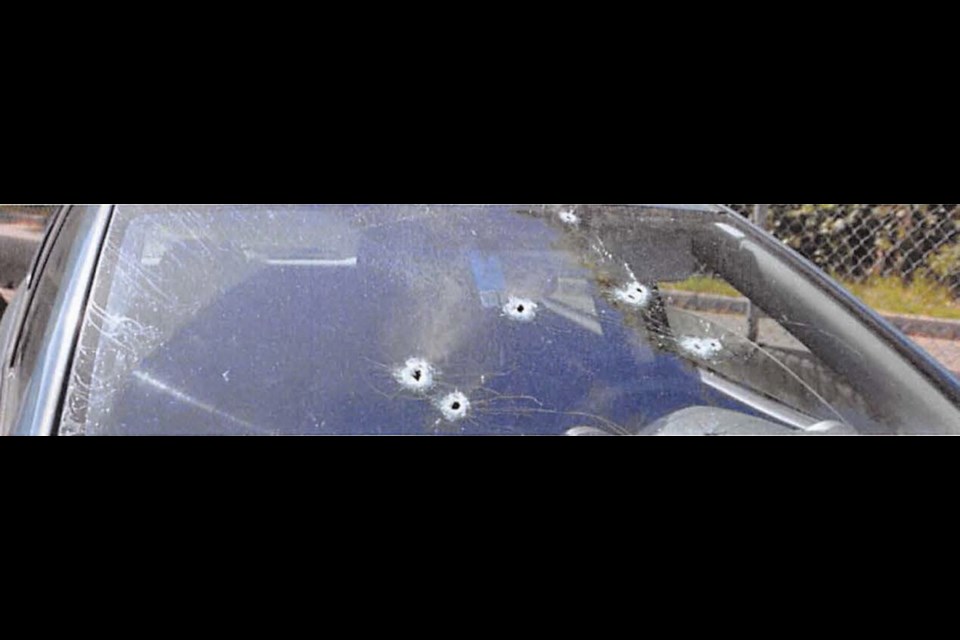The man killed in a police-involved shooting at a Nanaimo ferry terminal shot himself in the head at the same time as officers shot him several times in the chest, B.C.’s police watchdog has found.
In a report released Monday, the Independent Investigations Office, which investigates police-involved deaths or serious injuries, cleared the officers of wrongdoing in connection with the May 8 shooting at Departure Bay ferry terminal.
The man, whose identity has never been released, was wanted in connection with a violent car-jacking in Penticton and a shooting that wounded a man in Summerland.
Police had positioned themselves to intercept the car as it disembarked from the ferry about 10:15 a.m. The car was separated from the driving public and boxed in by unmarked police vehicles.
The man reached over to the passenger seat of the car, raised a long-barrel handgun and fatally shot himself in the head, the IIO found. As the man raised the pistol, two officers fired their 9-mm firearms, delivering what would have been fatal gunshot injuries to the man’s chest.
The report was based on interviews with 31 civilian witnesses, statements from 11 police officers, B.C. Emergency Health Services records, police transmission recordings, B.C. Ferries surveillance video, firearms analysis, a toxicology report, cellphone video, photographs and medical records.
The man was seated in the driver’s seat and photos released by the IIO show eight bullet holes in the windshield of the car. One officer fired three rounds and the other fired five shots, according to ballistics testing.
“Once stopped, the evidence is clear that [the man], while surrounded by police, raised his gun and shot himself in the head,” wrote Ron MacDonald, the IIO’s chief civilian director. “That was his only intention. However, as he did this, the gun would have been pointed at several police officers.”
Six of the civilian witnesses, including two B.C. Ferries employees, one paramedic and three bystanders, were either close to the incident or directly involved. Police also interviewed three people who knew the man but were not involved in the incident.
According to their accounts, the ship’s captain was contacted and told police that the car was among the first 20 vehicles on the upper deck. B.C. Ferries crew arranged for all traffic behind the man’s car to be held back.
Seven officers arrived in four unmarked police vehicles: a black SUV, a white van and two pickup trucks.
As the car drove off the ship, the police vehicles surrounded the vehicle, with the white van pulling in front. The man tried to pass the van on the right, which caused the van’s front bumper to hit the car’s rear driver side, spinning it in a counter-clockwise direction.
The other police vehicles blocked in the car to prevent escape. The SUV was nose-to-nose with the car.
Witnesses reported seeing officers get out of their vehicles and draw their firearms. They reported hearing a number of shots, but did not know who fired.
After the shots, waiting paramedics in the area went to the scene with lights and sirens on. One saw the man lying on his back in a pool of blood, with his hands cuffed behind his back. Officers were applying pressure to his wounds.
The man had a very serious head wound, three gunshot wounds to his abdomen, a gunshot wound to his collarbone and one to the left bicep.
The paramedic was told by an officer that the head wound was self-inflicted while the others were inflicted by police.
The paramedic reported that the man had a pulse and was put on ventilation. Paramedics performed CPR as the man was taken to Nanaimo Regional Hospital, where he was pronounced dead 20 to 30 minutes later.
Three civilian witnesses not involved with the incident at the ferry terminal told the IIO that the man told them by phone that he had “wasted somebody” and had stolen a car. He also said more than once: “I’m not going to jail. The police are going to have to shoot me.”
Another witness said the man showed them a firearm about a month before the incident. The description matched the gun found at the scene.
Witnesses who knew the man said he had serious life challenges, including an injury that prevented him from working and a serious substance addiction.
The two officers who fired the shots declined to provide statements, notes or data. That was their right under section 17.4 of the memorandum of understanding between the IIO and B.C. police agencies, and is consistent with the Canadian Charter of Rights and Freedoms.
One of the officers who led the police operation told the IIO that the arrest was deemed high or very high risk because the man was thought to be armed. The officer said the RCMP had an obligation to stop him to prevent further violent incidents.
At least three officers said that when the man raised his gun to shoot himself, it was pointed toward the windshield, putting officers in the line of fire.
“If I’d had my gun out, I would have shot him,” one officer said. “Until he put it to the side of his head, I didn’t know he was going to [shoot] himself.”
An autopsy report found an entrance wound at the right temple of the man’s head and an exit wound at the left side of his head.
The pathologist confirmed that the gunshot wound to the upper left chest would have been fatal and said it’s not possible to determine which shot occurred first.
A toxicology report found that the man had high levels of fentanyl in his body.



